The iPhone 5 Display: Thoroughly Analyzed
by Chris Heinonen on September 27, 2012 12:00 AM ESTWhen Apple rolled out the iPhone 5, they announced that it had a full sRGB gamut, which the new iPad almost achieves and would be a substantial improvement over the 4 and 4S displays. The slight increase in screen resolution and size means we are looking at a new panel than the previous generations used as well, with the new panel being speced at 800:1 contrast ratio and 500 nits of brightness. I don’t have a 4S to test, but used my iPhone 4 that was bought on launch day and has been in use since then for comparison. Numbers were run using CalMAN 5 software, and a SpectraCal C6 colorimeter that was profiled from an i1Pro spectrometer. All readings are the average of three measurements from the C6, except for very dark readings where ten measurements were taken for more accuracy.
For comparing the minimum black and white levels in the iPhone 4 and 5, I set the brightness to the minimum level where I could get a reading from a black screen. At the minimum value I couldn’t get any reading, which indicates that it’s below the 0.001 threshhold that the C6 is capable of reading. Both phones had a minimum black level reading of 0.006 nits, but the iPhone 4 had a white level of 5.669 nits compared to the iPhone 5 and its reading of 8.303 nits. This gives us contrast ratios of 1008:1 for the iPhone 4 and 1313:1 for the iPhone 5. Both are ahead of the specified numbers, but the iPhone 5 is clearly better here.
At maximum brightness, the iPhone 4 has a maximum white output of 390 nits, and the iPhone 5 clearly trumps that with 562 nits. The backlight of the iPhone 4 could have become slightly dimmer over time, but using LEDs it really should not have faded much. Black levels for the phones are 0.355 for the iPhone 4 and 0.412 for the iPhone 5. This gives us contrast ratios of 1097:1 for the iPhone 4 and 1364:1 for the iPhone 5. Clearly contrast levels have been improved here, despite the move to a larger screen that sometimes can affect them.
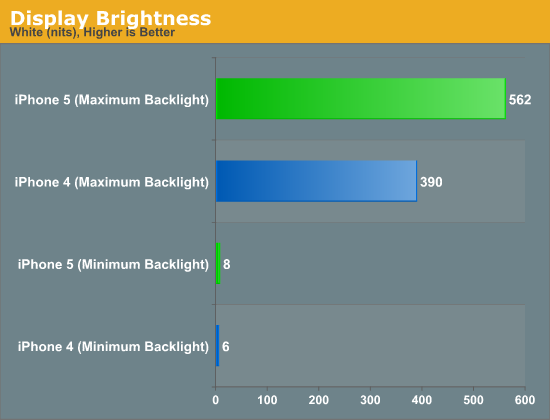
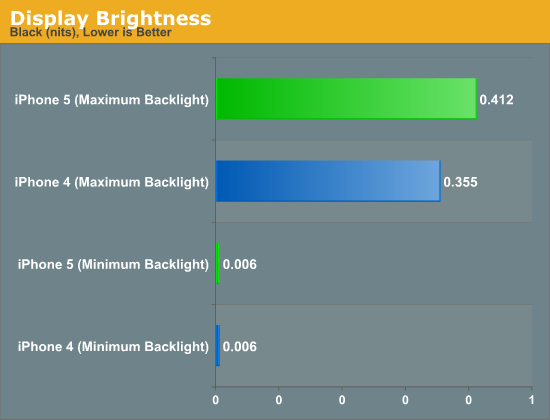
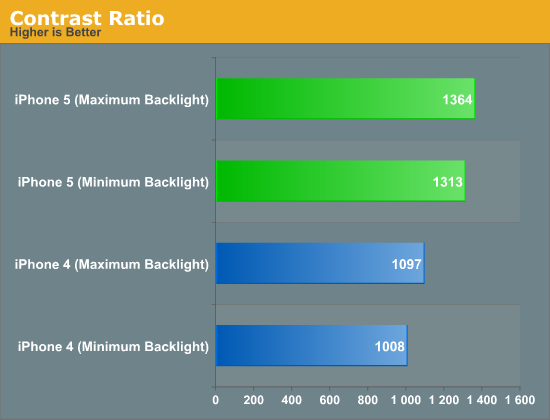
Looking at the grayscale, the iPhone 4 puts out an average dE2000 of almost 10 across the spectrum. The grayscale has a very noticeable blue shift that can be seen in the numbers, and a CCT that is close to 10000K and not the 6500K that is the sRGB standard. The gamma also shows a clear spike at the bottom when we target the sRGB gamma curve. If we target a gamma of 2.2 that spike goes away, as the sRGB gamma is linear at the bottom end. Overall the grayscale of the iPhone 4 would be rated as very poor if it was a desktop display or a television.
Looking at the iPhone 5, we see a totally different story. There is still a lack of red in the grayscale, but it’s much lower and the average dE2000 is a very respectable 3.1 across the spectrum. The gamma is again targeting 2.2 instead of sRGB which you can notice at the bottom end, but other than a couple outlier numbers at 30 and 35% stimulus, we have a grayscale that is almost entirely below the visible error line on the chart.
If I change the Gamma target to 2.2 from sRGB, you can see that the line is much flatter across the spectrum and that bump at 5% is eliminated. Since Apple uses 2.2 as the default target gamma on their computers and not the sRGB standard, I'm not too surprised to see that their phone would also target 2.2 as well.
sRGB Gamma Target
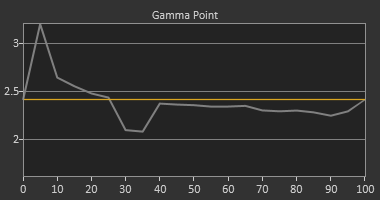
2.2 Gamma Target
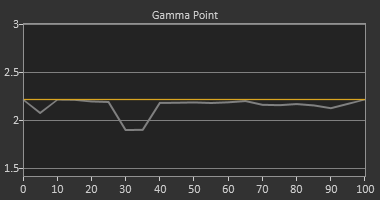
Overall the grayscale performance of the iPhone 5 is outstanding, and a world ahead of the iPhone 4 in performance.
Moving onto the color gamut, on the iPhone 4 using the CIE 1976 uv chart, we see that we clearly lack full saturation in Red, Green, and Blue in the color gamut, which leads to the secondaries also being under-saturated. Our dE2000 numbers are low for green and red, but blue is over 20 and pushes our average dE2000 over 11. This gives us errors that are clearly visible in normal use and means that many colors that fall inside of the sRGB gamut will not be rendered correctly as we can’t display the full area.
In contrast to this, the iPhone 5 covers almost the entire gamut. Red, Green, and Blue all have dE2000 values of 2.6 or less, and the average dE2000 value is 2.2, for a fantastic result. Unlike the charts for the iPhone 4 where not all of the data was visible, here we just see very small errors across the spectrum, with no individual dE component being higher than 8.
This improvement is very easy to notice on the iPhone 5 even without running numbers. Colors like the yellow in the eBay app icon are much more vivid and saturated than before, and blues have far more shades available than previously. The entire sRGB gamut is now available on the iPhone 5 and the result is outstanding.
Measuring how the phone handles saturations is another important step. While we know the iPhone 5 can reach the full saturations for each color, how well can it render those saturations that are less than 100%? Looking at the iPhone 4 quickly, we see that with its under-saturated gamut, we have very high dE2000 numbers across the board. Even lower saturations are way off the target and have high numbers. In the end this is better than those being accurate, as then anything beyond what the iPhone could display would be rendered identically so 60% blue and 100% blue would look the same, instead of both having errors that make them distinct to the eye. Of course this doesn’t excuse having an error over 10 across the whole spectrum, but that’s the choice that was made with the screens at the time.
Now looking at the iPhone 5, our numbers are even better than on the straight gamut charts. The average dE2000 drops below 2, and no single reading extends beyond 3 except for white. Across the whole spectrum of colors on the iPhone 5 you can expect accurate, well saturated colors that will look as accurate as they would on a reasonably calibrated desktop IPS display. I would be quite happy if desktop monitors and TVs were shipped this accurate.
Finally I now have the ability to run the Gretag Macbeth color checker chart on a phone to see how well they perform with non-primary and secondary colors. Since the iPhone 4 has such an under-saturated gamut, we would expect it to have a large error on the Gretag Macbeth chart and we are correct. The average dE2000 is over 8, and many of the numbers are off the charts. The only color without a visible error (below the yellow line) is black, and that really would be awful if black had a visible error. Overall the performance here is pretty mediocre, though somewhat in line with computer monitors as they are shipped to consumers.
With the iPhone 5, we see an average dE2000 of only 2.09, which would make it the best LCD monitor I would have reviewed at AnandTech to this point (in terms of out-of-the-box performance). Only a couple shades of orange creep above the green error line, and nothing moves above the yellow line that would make it clearly visible to a user. Every color point at least comes close to hitting its target, and there are no errors that are excessive or that you will notice even during color critical use.
Wrapping up, the iPhone 5 display is a quantum leap better than the display on the iPhone 4. Contrast levels and light output have both been increased, and color performance is astonishing. The full sRGB gamut is present here, and color errors are remarkably low even for a high end desktop display. While many were hoping for a move to OLED or some other screen innovation, this really is a huge step up that is very easy to quantify. To put this in perspective, in the past few years I've reviewed probably 30-40 different displays, from PC monitors to TVs to projectors. Not a single one, out of the box, can put up the Gretag Macbeth dE numbers that the iPhone can, and perhaps one projector (which listed for $20,000) can approach the grayscale and color accuracy out of the box.
Apple obviously has very high control over what parts they use and what comes off their assembly lines. I don't know if they are having the displays individually adjusted after they are assembled, or if the quality control is very strict, or if I just got a remarkably lucky sample. I do know that if TV and PC Monitor vendors were able to provide displays that looked like this out of the box, professional calibrators would lose a good amount of business. The new panel in the iPhone 5 is simply remarkable in quality and if it were a PC monitor, I'd give it a Gold Award on the basis of its performance.


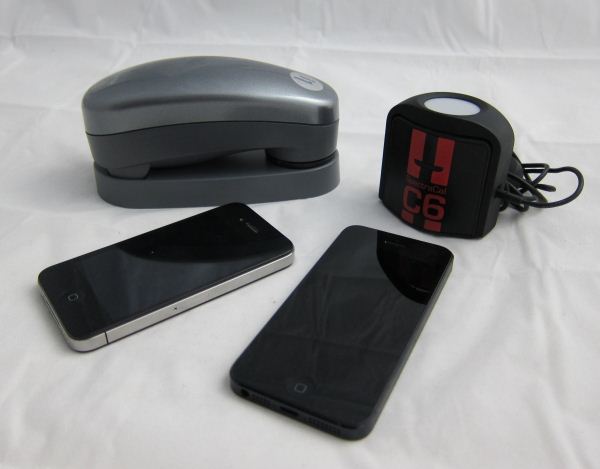
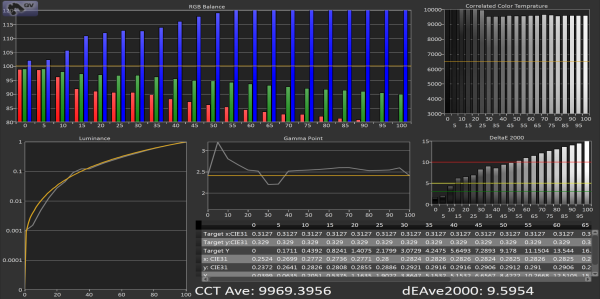





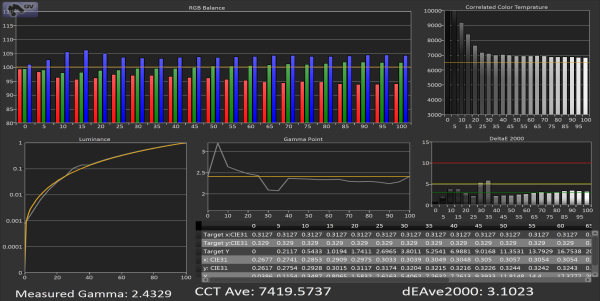





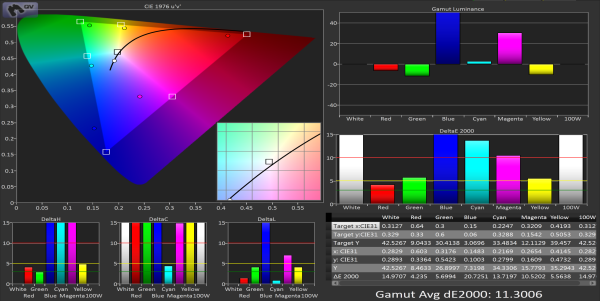






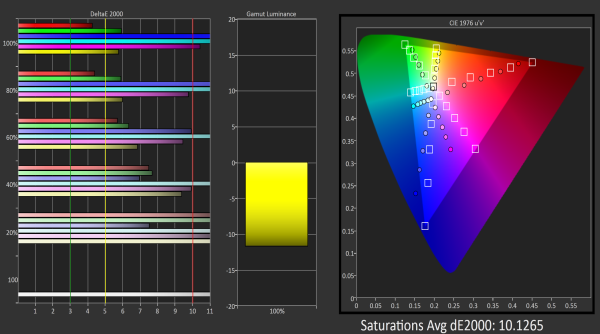



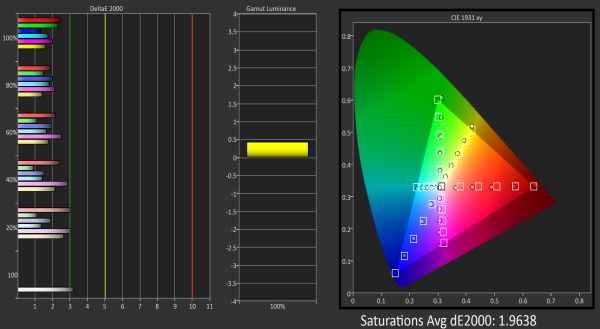


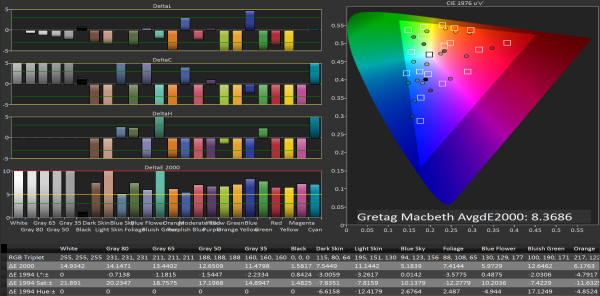





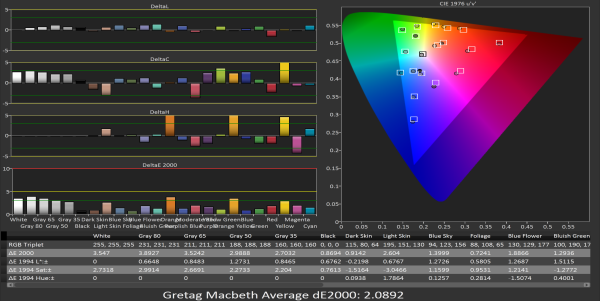













100 Comments
View All Comments
KitsuneKnight - Thursday, September 27, 2012 - link
The author mentions that at the start of the last paragraph: "I don't know if they are having the displays individually adjusted after they are assembled, or if the quality control is very strict, or if I just got a really remarkably lucky sample."Hopefully for their full iPhone 5 review (assuming there's going to be one big one) they'll have run additional 5's through these tests. Even if not, other sites will be conducting similar tests, so you could get a feel by looking at a number of reviews.
cheinonen - Thursday, September 27, 2012 - link
My wife has an iPhone 5 as well so I will try to run these tests on her phone if I get a chance, but that means being able to have her phone on me for a few hours so I can't do it while she's at work or anything else.mavere - Thursday, September 27, 2012 - link
The guy from DisplayMate posted an analysis of the 5's screen a couple days back. He found the quality to be as exceptional as Chris did.serversurfer - Friday, October 5, 2012 - link
According to the dude over at DisplayTech, the reason the color accuracy is so good is because, like the new iPad, the displays are actually being calibrated at the factory by Apple. (Yes, I know it's really Apple's proxy doing the testing, pedants, but thanks.)http://www.displaymate.com/Smartphone_ShootOut_2.h...
So yes, all of the iPhone 5 displays should be just as good as the one Chris tested.
kenyee - Thursday, September 27, 2012 - link
Even if you find out it's bad, it'll force Samsung to calibrate it better :-)It does have amazing blacks and colors though I have no doubt some colors are too vibrant.
And at the resolution of the GS3, pentile doesn't seem to matter...it's pretty much invisible at normal distances...
dot_color - Thursday, September 27, 2012 - link
Great review, it really is an amazing display- for ANY type of device.We also measured an iPhone 5 with our spectroradiometer (more accurate for gamut comparisons than a colorimeter) and had a slightly different color gamut result. We found the display was extremely close but just short of full sRGB coverage:
http://dot-color.com/2012/09/27/how-does-the-iphon...
Also took a look at color filter spectrum to break down, color by color, how Apple was able to make this big improvement in saturation.
cheinonen - Thursday, September 27, 2012 - link
In the name of more precision, here are my xyY values for WRGB readings:W: 0.307,0.326,52.8
R:0.642,0.334,10.3
G:0.312,0.605,38.8
B:0.150,0.061,4.2
dot_color - Thursday, September 27, 2012 - link
Very close to what we have, though we clearly took these measurements at different system brightness levels:W: 0.3067, 0.3292, 86.81
R: 0.6358, 0.3341, 17.04
G: 0.3063, 0.6055, 61.51
B: 0.1487, 0.0635, 8.04
In terms of area, that's 99.7% of sRGB in CIE1931 and 98.2% in 1976. Its also 73.9% of Adobe in CIE1931 compared to ours at 73.6%
Tiny bit wider gamut than ours. Interesting to measure more of these but this is actually very good process control as far as color filters go I'd say.
cheinonen - Friday, September 28, 2012 - link
I tried to pick as close to mid-brightness as I could. I usually run it much dimmer than that. Since the sRGB standard specifies 80 cd/m2 for a luminance level I could use that, but that is very dim for most people I'd imagine. Perhaps 200 cd/m2 like with monitor reviews is the way to go to standardize.ven - Monday, October 1, 2012 - link
just a question, aren't these credits should go for the display manufactures(in this case i think it is LG) ? yes, it is a apple device but nobody mentioned about the actual company who is responsible for such a quality screen.